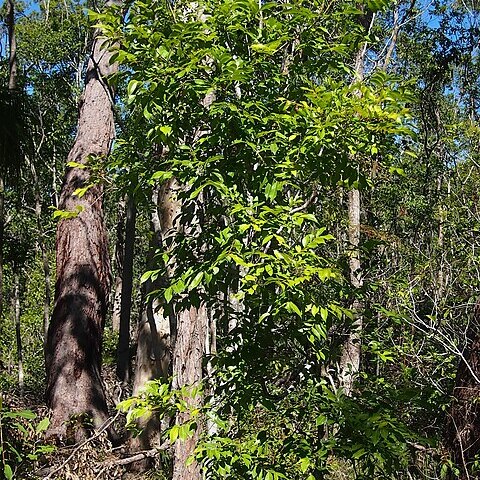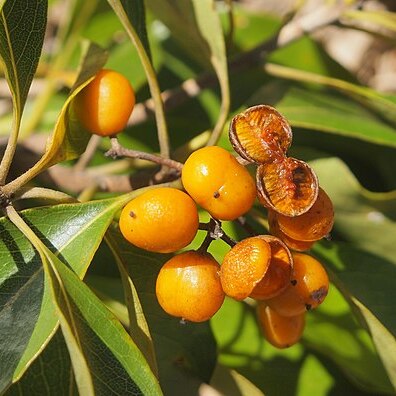Small, slender-trunked and sparsely branched tree to less than 10 m high; bark yellow brown, pustular; new shoots, leaves, inflorescences ferrugineously tomentose but rapidly glabrescent; shoots slightly ridged with prominent lenticels. Leaves variable, adult leaves narrow-elliptic to elliptic, tapering at both ends, 80–115 mm long, 20–30 mm wide, margins undulate, crenulate, apices acute to barely acuminate in adult leaves; adaxial (upper) surface with venation becoming more impressed with age; abaxial surface smooth; petioles 15–25 mm long. Inflorescences shortly pedunculate, triads to branched umbels, elongating by anthesis but still barely exceeding the surrounding leaves; rachis Flowers urceolate-salverform; pedicels
A tall shrub or small tree. It grows up to 20 m tall. Sometimes it is only 3-4 m tall. The branches have rusty hairs. The leaves are 25 cm long by 8 cm wide. They are alternate and sword shaped. They are dark green above and with rusty hairs underneath. Flowers are about 0.8 cm across. They are white or creamy yellow. They occur in groups at the ends of branches. The flower petals are 6-7 mm long. The fruit is a 3-valve capsule. It is tiny and the fruit is a dull yellow. The fruit is about 1.5 cm across. The seeds are right red and sticky.


